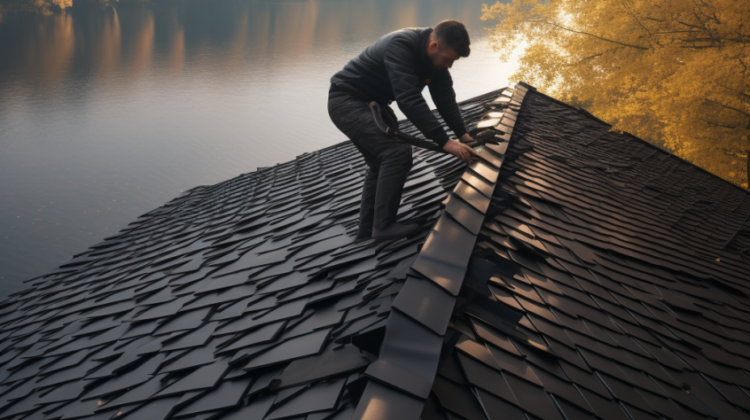
The roof of a home is one of its most essential components, as it provides protection from the elements and helps to keep the structure and contents safe and dry. Over time, roofs can wear down and sustain damage, leading homeowners to consider replacing the roof themselves or hiring a professional contractor. While replacing a roof yourself may seem like a cost-effective solution, it’s important to consider the risks and potential pitfalls before taking on such a significant project.
First and foremost, replacing a roof is a complex and physically demanding task that requires specialized knowledge and skills. A roofing project typically involves removing old shingles or tiles, repairing any underlying damage, and installing new roofing materials. This requires climbing onto the roof, eliminating heavy materials, and using power tools, which can be dangerous if not done correctly. In addition, roofing projects require a thorough understanding of local building codes and safety regulations, which can vary depending on the home’s location.
Another consideration is the cost of materials and equipment. While DIY roof replacement may seem cost-effective, purchasing the necessary materials and equipment can add up quickly. Additionally, if you make any mistakes during the installation process, you may need to buy additional materials to correct the error, adding to the project’s overall cost.
Another potential drawback of replacing a roof yourself is the time commitment required. Depending on the roof’s size and the project’s complexity, replacing a roof can take several days or even weeks to complete. This can significantly disrupt your daily routine, especially if you have other commitments such as work or family obligations.
Finally, it’s essential to consider the quality of the workmanship when replacing a roof yourself. Even if you have experience with DIY projects and have completed other home improvement projects successfully, roofing is a specialized skill requiring high precision and attention to detail. If the new roof is not installed correctly, it can lead to leaks, damage to the underlying structure, and other issues that can be costly to repair.
Given these considerations, it’s clear that replacing a roof yourself is not a decision to be taken lightly. While DIY roofing projects can be successful in some cases, they are typically best left to professional contractors with the knowledge, skills, and experience to complete the job safely and efficiently.
If you decide to replace your roof yourself, it’s important to take the necessary precautions to ensure your safety and the safety of others. This includes using appropriate safety gear such as helmets, gloves, and safety harnesses and providing that all tools and equipment are in good working order and used correctly. It’s also essential to follow all local building codes and safety regulations and to obtain any necessary permits before beginning the project.
In conclusion, while replacing a roof yourself may seem tempting, it’s important to carefully consider the risks and potential pitfalls before taking on such a significant project. Hiring a professional contractor is often the safest, most cost-effective option for replacing a roof and ensuring that the job is done correctly. However, if you decide to take on the project yourself, take the necessary precautions and follow all local regulations to ensure a successful and safe outcome.
